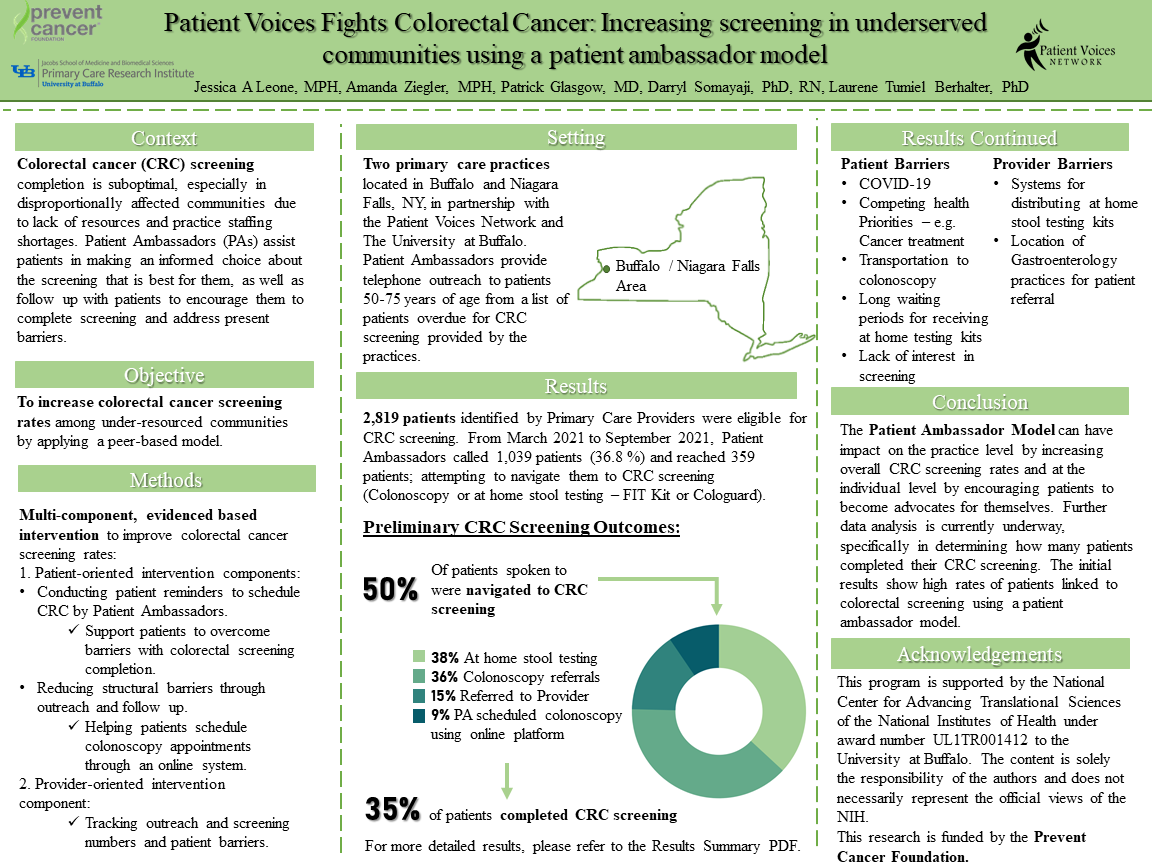SRFP076: Patient Voices Fights Colorectal Cancer: Increasing screening in underserved communities using a patient ambassador model
Jessica Leone, MPH; Laurene Tumiel-Berhalter, PhD; Darryl Somayaji, PhD, CNS, CCRC; Patrick Glasgow, MD; Amanda Ziegler

Jack Westfall
jwestfall@aafp.org 11/21/2021Terrific project. Great poster and abstract. Thanks for sharing at NAPCRG